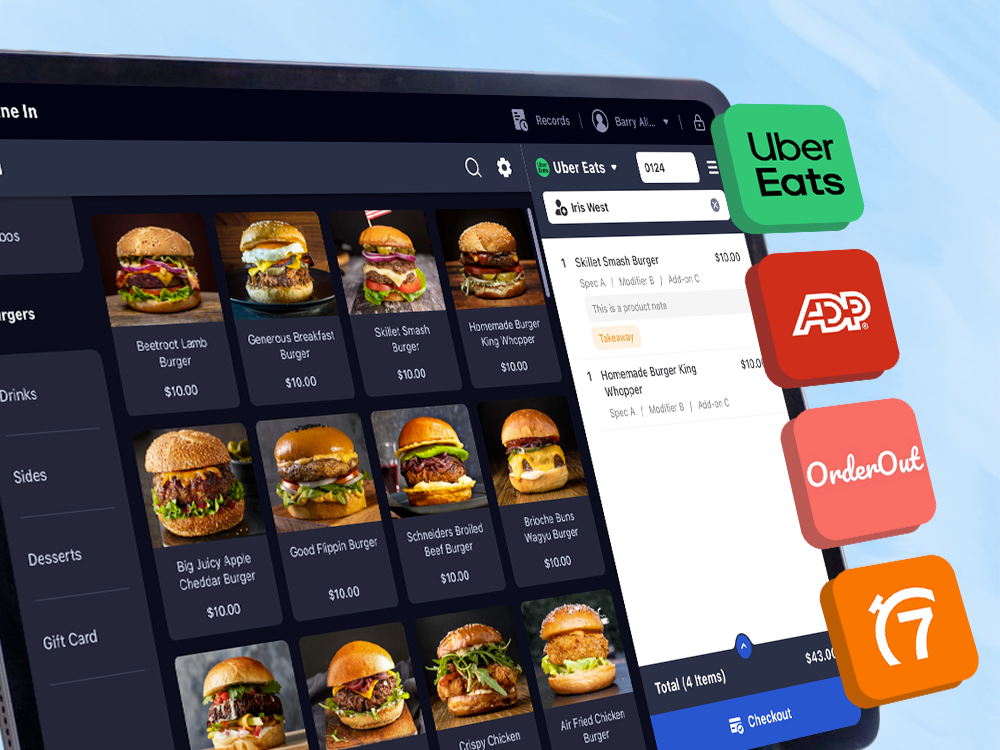Table of Contents
In 2025, the restaurant industry is more competitive than ever, and meeting customer expectations for seamless ordering experiences is critical to success. Omni-channel ordering—integrating tableside, online, QR code, and kiosk ordering—has become a game-changer for restaurants aiming to boost efficiency and customer satisfaction. Pairing omni-channel ordering with a cloud-based POS system like OrderPin allows restaurants to streamline operations, increase revenue, and stay ahead of the curve. In this article, we’ll explore how to leverage omni-channel ordering with a cloud POS and why it’s essential for restaurants in 2025.
What Is Omni-Channel Ordering?
Omni-channel ordering enables customers to place orders through multiple channels—such as in-person tableside ordering, online platforms, QR codes, or self-service kiosks—while maintaining a consistent experience. A cloud-based POS system, like OrderPin, unifies these channels into a single platform, ensuring real-time synchronization of orders, inventory, and customer data. Built on Amazon AWS, OrderPin’s cloud POS supports seamless integrations across devices, from tablets to kiosks, making it ideal for modern restaurants.
5 Ways Omni-Channel Ordering with Cloud POS Drives Success
1. Enhancing Customer Convenience
Today’s diners expect flexibility. Whether they’re scanning a QR code at their table, ordering online for pickup, or using a kiosk for quick service, omni-channel ordering caters to diverse preferences. OrderPin’s cloud POS integrates all these channels, allowing customers to order how they want without delays. For example, QR code ordering lets diners browse menus and pay instantly via their phones, reducing wait times and enhancing satisfaction.
Stat: Restaurants using QR code ordering report a 20% increase in table turnover, according to industry studies.
2. Streamlining Operations Across Channels
Managing multiple ordering channels can be chaotic without a unified system. OrderPin’s cloud POS centralizes order processing, syncing tableside, online, and kiosk orders in real-time. This eliminates errors like double orders or inventory mismatches. For instance, when a customer orders online, OrderPin’s backoffice portal instantly updates inventory and kitchen displays, ensuring smooth operations.
Example: A bistro using OrderPin’s omni-channel system reduced order errors by 15% after integrating online and tableside ordering.
3. Boosting Revenue with Upselling Opportunities
Omni-channel ordering creates opportunities to upsell through personalized recommendations. OrderPin’s POS system can display suggested add-ons (e.g., drinks or desserts) on kiosks or online menus, increasing average order values. Additionally, its e-voucher and loyalty features encourage repeat purchases by offering tailored promotions across channels.
Case Study: A fast-casual restaurant using OrderPin’s loyalty system saw a 25% revenue boost during a promotion that offered e-vouchers for online orders.
4. Improving Inventory Management
Omni-channel ordering generates a wealth of data, and a cloud POS like OrderPin uses real-time analytics to track inventory across all channels. When an item is ordered via QR code or online, the system automatically updates stock levels, preventing overselling and reducing waste. This ensures popular items are always available, enhancing customer satisfaction and profitability.
Tip: Use OrderPin’s backoffice portal to monitor inventory trends and set automatic restocking alerts for high-demand items.
5. Scaling for Multi-Location Restaurants
For restaurant chains, omni-channel ordering with a cloud POS enables standardized operations across locations. OrderPin’s AWS-powered platform allows owners to manage multiple stores from a single backoffice portal, ensuring consistent menus, pricing, and promotions. Whether customers order online or at a kiosk, the experience remains seamless, strengthening brand loyalty.
Why Choose OrderPin for Omni-Channel Ordering?
OrderPin’s cloud-based POS is designed for flexibility and scalability, making it the perfect choice for omni-channel ordering. Key features include:
Full Integrations: Supports tableside, QR code, online, and kiosk ordering with real-time syncing.
Customizable Apps: White-label web and mobile apps for branded online ordering.
High Stability: Built on Amazon AWS for reliable performance across devices.
Intuitive Interface: Staff can learn the system in minutes, minimizing training costs.
Robust Analytics: Backoffice portal provides insights into sales, inventory, and customer behavior.
How to Implement Omni-Channel Ordering with OrderPin
Assess Your Needs: Identify which channels (tableside, online, QR code, kiosk) your customers prefer.
Choose Compatible Hardware: OrderPin supports tablets, phones, and kiosks for flexible setups.
Set Up Your System: Configure menus, pricing, and integrations in OrderPin’s backoffice portal.
Promote Your Channels: Market your online ordering and QR code options via social media and in-store signage.
Monitor Performance: Use OrderPin’s analytics to track sales and optimize operations.
Book a Demo: Contact OrderPin to see how its cloud POS can transform your restaurant.
Future Trends in Omni-Channel Ordering
Looking ahead to 2025, expect these trends to shape omni-channel ordering:
AI-Driven Personalization: AI will enhance upselling by suggesting items based on customer preferences.
Voice Ordering Integration: Customers may soon place orders via voice assistants, synced with cloud POS systems.
Sustainability Focus: Eco-friendly options, like digital receipts, will gain traction through omni-channel platforms.
By adopting omni-channel ordering now, restaurants can stay ahead of these trends and deliver exceptional customer experiences.
Omni-channel ordering, powered by a cloud POS like OrderPin, is revolutionizing how restaurants operate in 2025. By enhancing customer convenience, streamlining operations, boosting revenue, improving inventory, and enabling scalability, this approach drives success in a competitive market.


